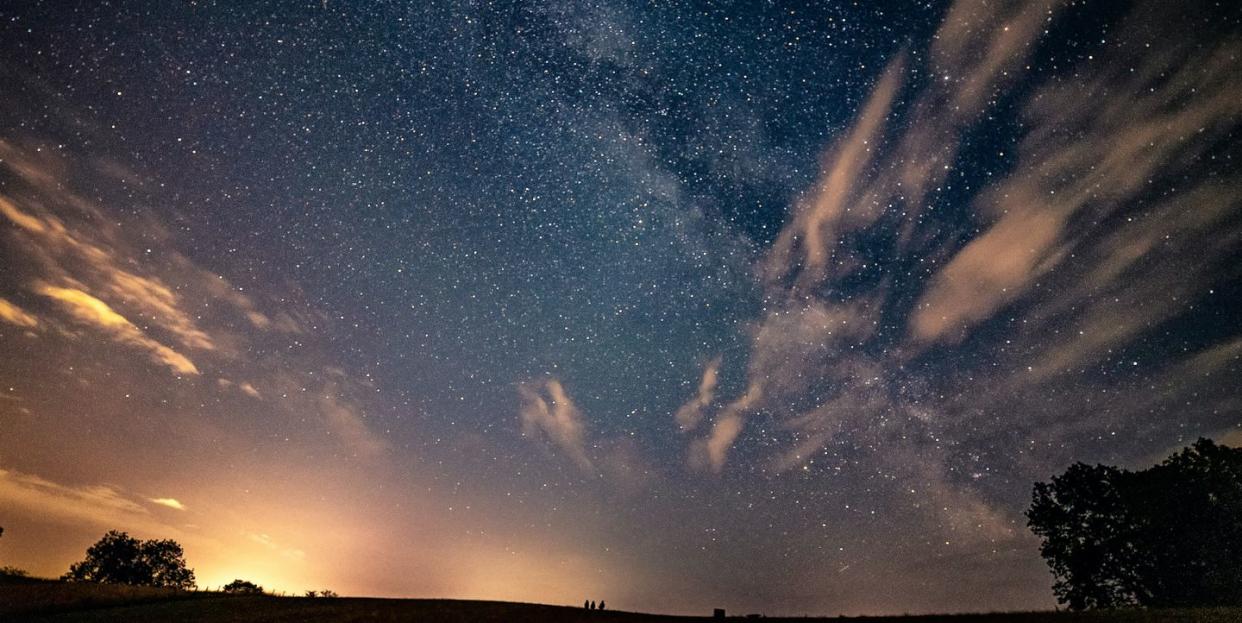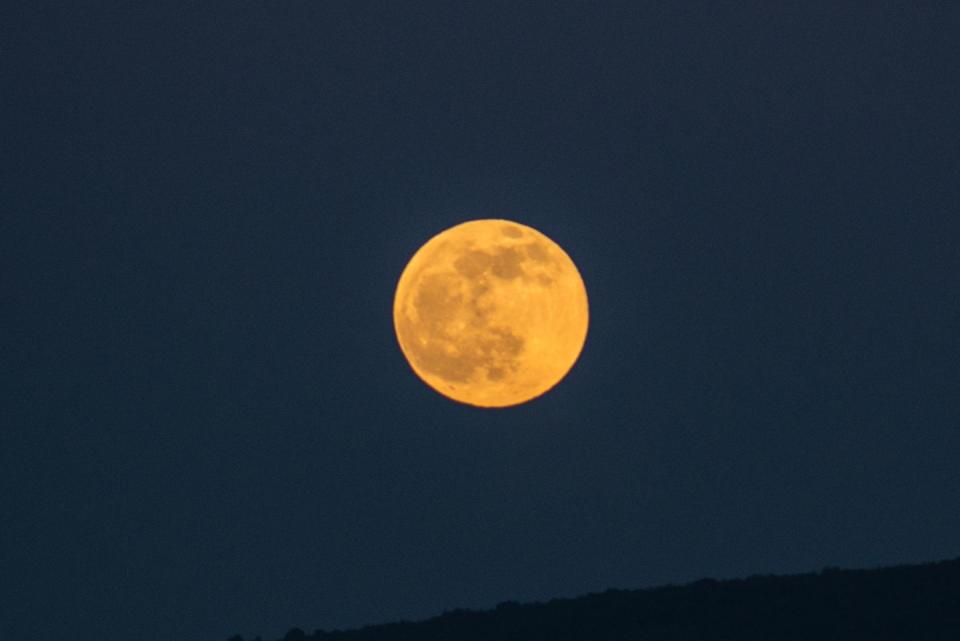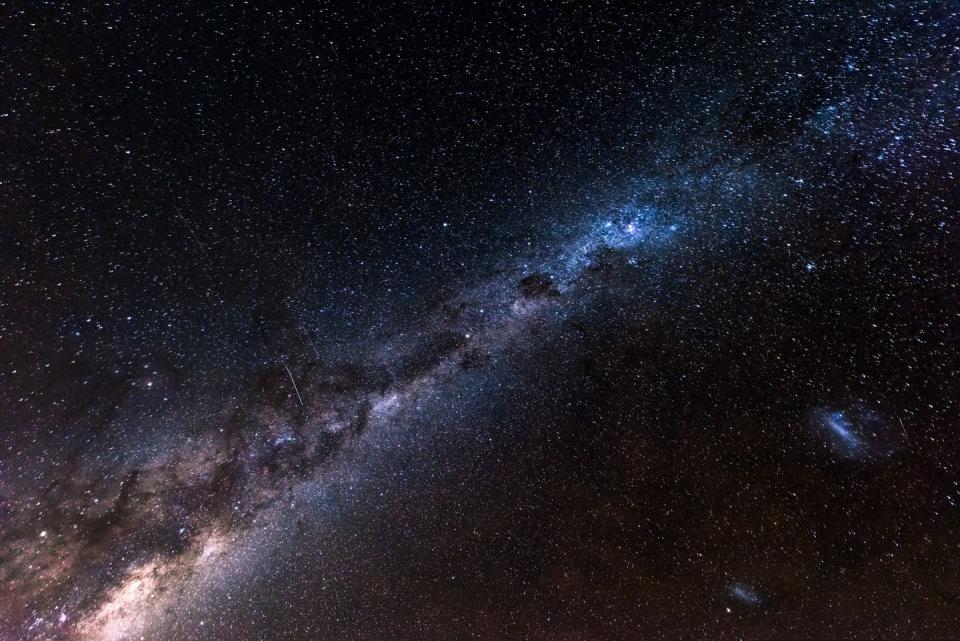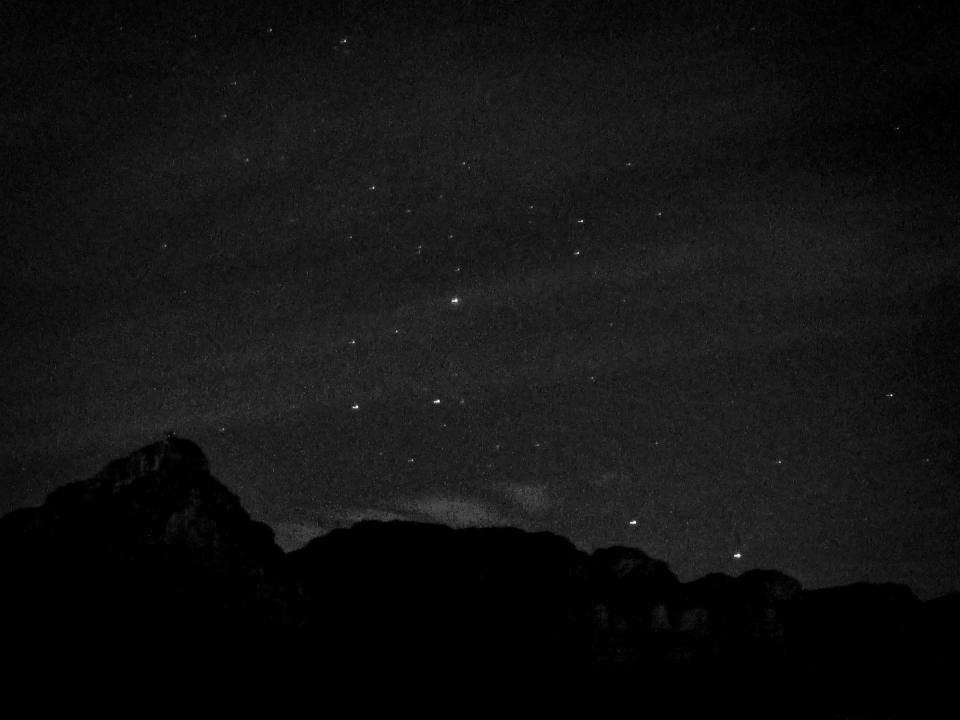Your month-by-month calendar guide to the best celestial events in 2022

There are heaps of celestial events to look forward to in 2022. From meteor showers to solstices, equinoxes and glowing supermoons, we have compiled your ultimate calendar guide to the very best astronomical events.
Grab your telescope and take a look at the dates to save in your diary below...
JANUARY
There's lots to look forward to in January, with some of the best celestial events including the opportunity to spot Mercury. On 7th January, the planet appears at its farthest distance from the sun in the evening sky.
Elsewhere, January will also welcome the first full moon of the year on the 17th. Known as the Wolf Moon, it's expected to grace our skies at around 11.48pm.

FEBRUARY
On 1st February, be sure not to miss the New Moon. This is when the sun and moon are aligned, with the sun and earth on opposite sides of the moon. As well as this, you also don't want to miss February's Snow Moon, which will light up the sky on the 16th. You're in for a double treat, as on the same day you might be able to spot mercury when it appears at its farthest distance from the sun in the morning. Telescopes at the ready...
MARCH
March is a great month for stargazing, with the moon reaching its New Moon phase on the 2nd at around 17:34 UTC. Plus, March's full moon, known as the Worm Moon, will light up the sky on the 18th in many locations in the Northern Hemisphere. Typically the last full moon of the astronomical winter, this moon is linked to the start of spring, when earthworms surface and migrating birds return as the temperatures warm up.
You'll also want to mark March 20th in your diaries. Not only is it officially the beginning of spring (no more winter!) but it's also the day when Venus will shine as brightly as a star, appearing at its farthest distance from the sun.

APRIL
April is a packed month, with some highlights including the New Moon on the 1st, earthshine nights on the 4th and 5th (this is where the unlit part of the moon becomes visible), and April's stellar full Pink Moon on the 16th.
"The April full moon is often called the Pink Moon, named after pink phlox flowers that are the first wild flowers to bloom in spring," Dr Emily Drabek-Maunder, astronomer at the Royal Observatory Greenwich, tells us.
"The Full Moon in April can also be called the Fish Moon, Hare Moon, Egg Moon and Sprouting Grass Moon. Traditionally, full moons are named from Native American tradition, but many of them also can come from Anglo-Saxon and Germanic origins."
But that's not all: April will also see the spectacular Lyrid Meteor Shower dazzle through the sky on the 22nd and 23rd, as well as another earthshine night on the 26th/27th, and a Partial Solar Eclipse on the 30th.
The meteor shower occurs when the earth passes through streams of debris left behind by comets and asteroids. As pebble-sized pieces of debris collide with the Earth, they burn up and appear as shooting stars.
MAY
Astronomy enthusiasts will be pleased to know there will be another earthshine night on the 3rd and 4th May, as well as the impressive Eta Aquariid Meteor shower on the 5th and 6th. Associated with Comet Halley, the Eta Aquariid is named after the constellation Aquarius, appearing to fall between April and May every year. With up to 40 shooting stars raining down on Earth, you certainly don't want to miss this stellar display.
Elsewhere in May, there is also a total lunar eclipse on the 16th, which will coincide with the beautiful Flower Full Moon. Known as the Blue 'Flower' Moon, May's moon was named so by native American tribes because it appears during spring when flowers start to blossom. It can also be referred to as a Mother’s Moon, Milk Moon, or Corn Planting Moon.
Don't forget the New Moon on March 30th — the perfect opportunity to do some star and planet gazing from your back garden.

JUNE
Make sure you don't miss the Strawberry Full Moon on June 14th. This year, it's also a supermoon, so expect a real stellar sight. According to Time and Date, June's full moon got its name as it's the month when wild strawberries begin to ripen. It marks the beginning of the summer months and is also known as the Hot Moon.
Other highlights in June include Mercury at Greatest Elongation West on June 16th where you can spot the planet (if you're lucky) and June Solstice on the 21st — the longest day of the year.
JULY
In July, the celestial events to look forward to include the Earth reaching its aphelion on the 4th (the point on its orbit farthest from the sun), the Buck Moon on the 13th, and the New Moon which falls on the 28th. Grab your binoculars, look up, and catch a glimpse of the breathtaking sight.
AUGUST
Summer is in full swing, and the sky has heaps for stargazers to enjoy. First up is the Sturgeon Moon, which falls on August 12th. Some of the moon's other names include the Grain Moon, Green Corn Moon, Fruit Moon and Barley Moon, all of which are inspired by various crops that can be harvested in August. It is also sometimes referred to as the Red Moon, because of its reddish hue.
The Perseid meteor shower, falling on August 12th and 13th, is usually one of the most active and brightest meteor showers of the year. Named after the Perseus constellation, the spectacular show occurs when Earth moves through a trail of material left behind by the comet Swift-Tuttle every August.
On August 14th, Saturn will be at Opposition and will be visible from sunrise to sunset. Later in the month, on the 27th, Mercury will be at Greatest Elongation East, meaning many of us could be in with a chance of spotting the planet.

SEPTEMBER
In September, the spectacular Harvest Moon will light up the sky on the 10th. Meanwhile, the New Moon will appear on September 25th and Jupiter will be visible all night on the 26th.
OCTOBER
October is packed with celestial events, starting with mercury appearing at its farthest distance from the sun in the morning sky on the 8th. You'll also be able to spot shooting stars thanks to the Draconid Meteor Shower, which falls on the 8th and 9th.
"The Draconids meteor shower is named after the constellation of Draco the dragon. This is because, although meteors appear all over the sky, they all appear to emerge or radiate from a single point that lies within this constellation," Anna Ross, an Astronomer from the Royal Observatory tells Country Living.
Elsewhere in October, other highlights include the Hunters Moon on the 9th, the Orionid Meteor Shower on the 21st/22nd, plus a Partial Solar Eclipse taking place on the 25th.

NOVEMBER
November begins with a Total Lunar Eclipse on the 7th/8th, followed by the Full Beaver Moon on the 8th – and it's definitely worth catching a glimpse. You also don't want to miss the Leonid Meteor Shower on November on the 17th and 18th, as well as the New Moon which will light up the sky on the 23rd.
DECEMBER
On December 8th, Mars will lie on the opposite side of the earth to the sun, shining brightly in the sky all night. You might be busy putting up your Christmas decorations, but other celestial events to look out for include the Cold Moon on the 8th, the Geminid Meteors on the 13th and 14th, the Ursid Meteors on the 22nd, plus the Super New Moon which will light up the sky on the 23rd.

Follow Country Living on Instagram.
You Might Also Like

